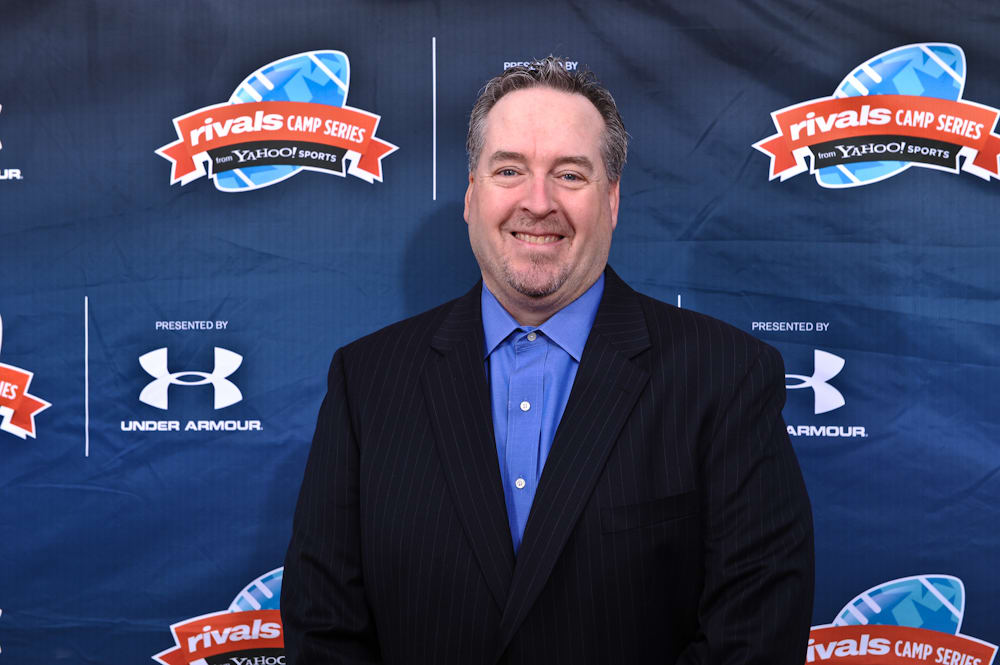Rivals.com National Recruiting Director Mike Farrell’s thought-provoking Three-Point Stance is here as he grades the first year coaches, gives his thoughts on expanding the playoff and his final Heisman list.
MORE THREE-POINT STANCE: Last weekend's CFB standouts and flops
1. Lincoln Riley earns an 'A+'
The regular season is over so now I can rank the first year Power Five head coaches (not including interim head coaches). If you remember, I got a lot of flak last year for giving Kirby Smart such a good grade, but that turned out to be a precursor of things to come. So which coach will be next year’s star? Here are my rankings ...
Lincoln Riley, Oklahoma – A+ A playoff appearance in year one, you can’t get much better than that right?
Willie Taggart, Oregon – B+ When he had his starting quarterback his Ducks were dangerous, and it’s not like the cupboard was full when he arrived. He did very well with a young team and now he can try to do the same at Florida State.
Ed Orgeron, LSU – B A solid record (9-3), but he gets a middling grade because the only really good team LSU beat was Auburn.
Tom Herman, Texas – B- The record (6-6) isn’t great and expectations were higher, but a winning record in the Big 12 in Year One and closes losses to USC, Oklahoma, Oklahoma State count for something right?
Jeff Brohm, Purdue – B- A record of 6-6 is good for Purdue in Year One, especially based on what he inherited, and his team competed in almost every game. There were some bad losses (Rutgers, Nebraska), but overall he did a good job.
Justin Wilcox, Cal – C+ An overall record of 5-7 isn’t great, and 2-7 in conference is bad. But the Golden Bears beat Washington State and were competitive with Stanford and some others.
Tom Allen, Indiana – C Like Wilcox, an overall record of 5-7 and 2-7 in conference, but no signature win. There were a few competitive games against good opponents (Michigan, Michigan State) and some signs of hope.
P.J. Fleck, Minnesota – C- Fleck didn’t finish with a winning record (5-7) and 2-7 in conference isn’t great, especially since he inherited some talent, and there isn’t a great win here.
Matt Rhule, Baylor – D- I don’t give out “F” grades, so this is as low as I will go, but a 1-11 season with the only win over Kansas is horrible. No way to sugarcoat it.
2. Let's expand the playoffs
Once again I’ll say it: The playoff needs to expand to eight teams, and the recent controversy surrounding Alabama’s inclusion and Ohio State’s exclusion will push that agenda.
The reason I’ll give this time? Bluebloods. In the history of the playoff, the following teams have made it – Alabama, Clemson, Oklahoma, Ohio State, Oregon, Florida State, Michigan State, Washington and Georgia. Of those teams, which would you consider a non-blueblood program? Michigan State? Washington? Oregon? My point is that the current four-team playoff system is about the bluebloods and doesn’t give many other programs a chance at the title.
Expand to eight and you add teams like Wisconsin, Penn State, Michigan, Iowa, Stanford, Notre Dame, TCU, Baylor, Mississippi State or whoever else would be in that range. Yes, some of those are bluebloods, but others are not, and I think the parity in college football would be improved without taking away anything from the regular season.
And let me ask you this: If at the beginning of the season I told you the four in the playoff would be Clemson, Oklahoma, Georgia and Alabama, would you be surprised? Georgia might surprise you, but the rest would not be shocking at all. And the team that got left out, Ohio State, wouldn’t have been a surprise either. Let’s expand this to eight to get more teams a chance to win it all. Those who think it will lessen the importance of the regular season aren’t thinking straight.
3. Mayfield on top, but other Heisman-worthy seasons
My final Heisman list is here. I know that Baker Mayfield, Bryce Love and Lamar Jackson have been invited to New York, and that Mayfield is pretty much a lock to win, but why not give a full top 10? Here are mine:
1. Baker Mayfield, Oklahoma – The hands-down winner to me. He’s clearly the best player in college football.
2. Lamar Jackson, Louisville – The stats are once again amazing, but the wins aren’t there. I can’t see giving it to him over Mayfield.
3. Bryce Love, Stanford – An amazing season for Love, but if Christian McCaffrey didn’t win it breaking Barry Sanders' records, Love shouldn’t win it over Mayfield this year.
4. Jonathan Taylor, Wisconsin – A freshman sensation, he was the best running back in the Big Ten this year. Imagine predicting that at the start of the season.
5. Saquon Barkley, Penn State – The Swiss Army Knife of the offense, his versatility is amazing, and he should have been invited to New York.
6. Kerryon Johnson, Auburn – The MVP of the Auburn offense, without him the Tigers don’t come close to pushing for the playoff. He could be the most important non-quarterback to a team in the country.
7. Khalil Tate, Arizona – His numbers are astounding and he might be higher had he been the starter from Game One, but his team was never in contention for much.
8. Rashaad Penny, San Diego State – Amazing numbers but not amazing enough for a Group of Five player to unseat all the others, in my opinion.
9. Minkah Fitzpatrick, Alabama – I had to throw a defender in here, and Fitzpatrick came to mind, although it could have been Christian Wilkins from Clemson or Jeff Holland from Auburn.
10. Mason Rudolph, Oklahoma State – Great stats but not good enough in some big games, he still deserves top 10 status.
